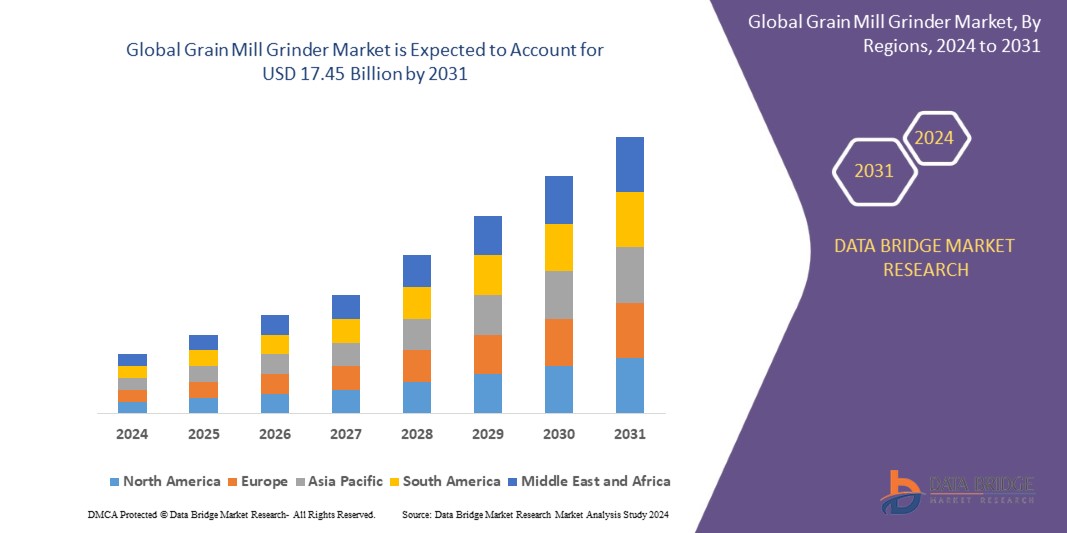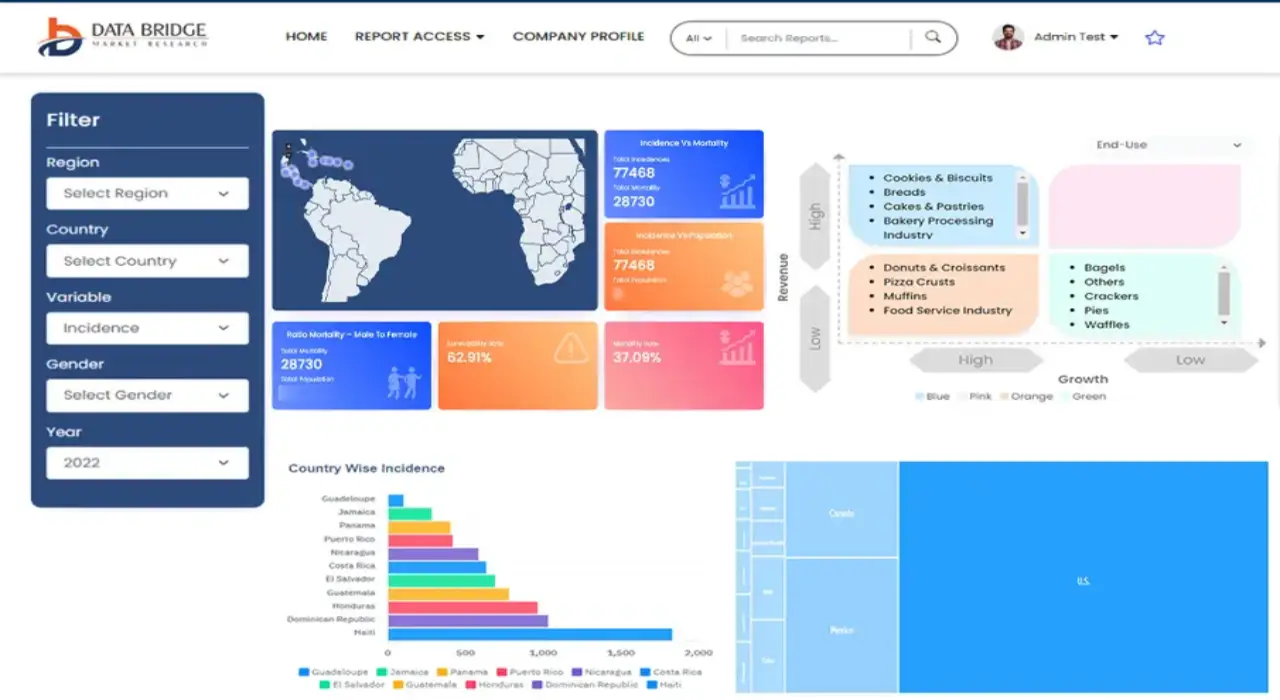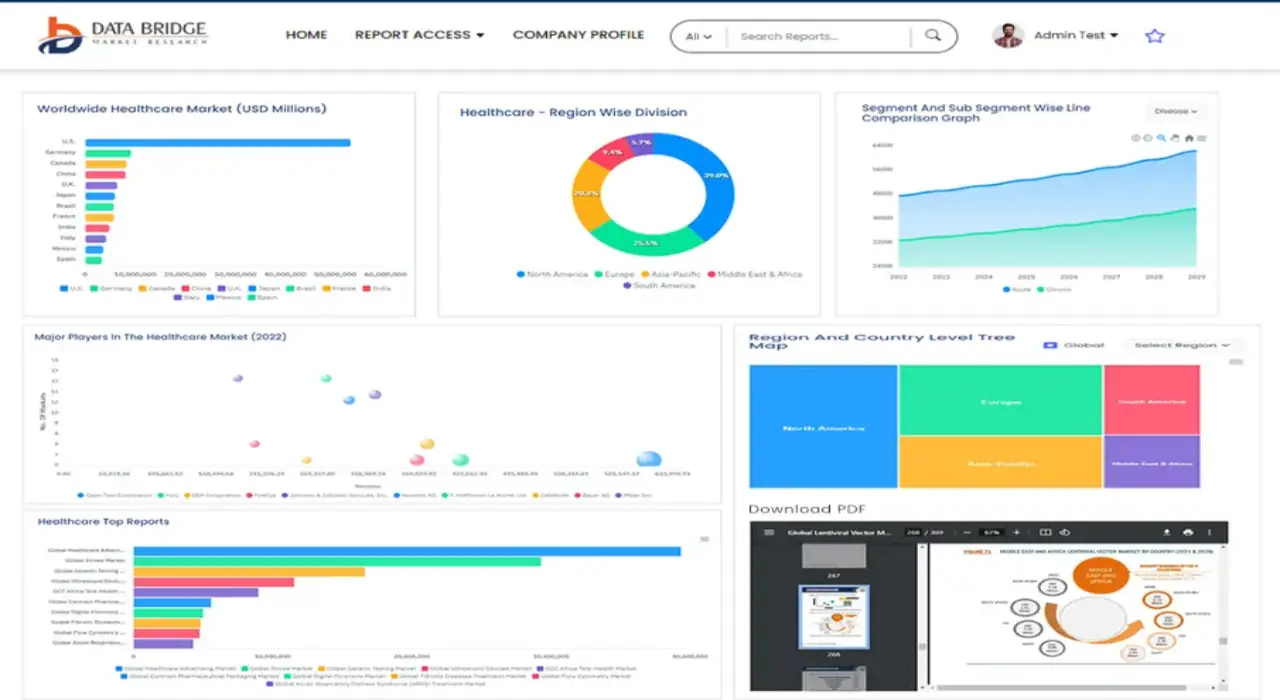Global Grain Mill Grinder Market
Tamanho do mercado em biliões de dólares
CAGR :
% 
| 2024 –2031 | |
| USD 11.11 Billion | |
| USD 17.45 Billion | |
|
|
|
>Segmentação global do mercado de moedores de grãos, por tipo (moinho de martelo, moinho de rolos, moinho de pedra e moinho de pinos), aplicação (comercial, industrial e uso doméstico), tipo de grão (trigo, milho, cevada e arroz ), por potência Fonte (elétrica, manual e diesel/gasolina) e por utilizadores finais (indústria de transformação alimentar, agricultura e retalho) – Tendências e previsões do setor para 2031
Análise global do mercado de moedores de grãos
O mercado global de moinhos de grãos está a experimentar um crescimento constante, impulsionado pela crescente procura de grãos processados na produção de alimentos e pela crescente popularidade da moagem doméstica . Os avanços tecnológicos, como a automação e os projetos de eficiência energética , estão a aumentar a eficiência e a reduzir os custos operacionais. As principais regiões, incluindo a América do Norte e a Europa, dominam o mercado devido às suas indústrias de processamento de alimentos estabelecidas. Além disso, a tendência crescente para uma alimentação biológica e consciente sobre a saúde está a aumentar a procura de produtos frescos e integrais. Os desafios incluem a flutuação dos preços das matérias-primas e a concorrência de tecnologias de moagem alternativas, mas, no geral, as perspetivas do mercado continuam positivas.
Tamanho do mercado do moedor de grãos
O tamanho global do mercado de moedores de grãos foi avaliado em 11,11 mil milhões de dólares em 2023 e deverá atingir os 17,45 mil milhões de dólares até 2031, com um CAGR de 5,8% durante o período de previsão de 2024 a 2031. Para além dos insights sobre cenários de mercado, tais como valor de mercado, taxa de crescimento, segmentação, cobertura geográfica e grandes players, os relatórios de mercado com curadoria da Data Bridge Market Research incluem também análise especializada aprofundada, análise de preços, análise de quota de marca, inquérito ao consumidor, análise demográfica, análise da cadeia de abastecimento, análise da cadeia de valor, visão geral das matérias-primas/consumíveis, critérios de seleção de fornecedores, análise PESTLE, análise de Porter e enquadramento regulamentar.
Tendências do mercado de moedores de grãos
“Aumento da procura por alimentos processados”
A crescente procura por alimentos processados alimenta significativamente o crescimento do mercado de moedores de grãos. À medida que os consumidores procuram conveniência e opções prontas a consumir, os fabricantes recorrem cada vez mais à moagem de cereais para produzir farinha, farinha e outros ingredientes à base de cereais de forma eficiente. Esta tendência é particularmente evidente em setores como a panificação, os snacks e os alimentos para o pequeno-almoço, onde a qualidade das matérias-primas tem um impacto direto no apelo do produto. Além disso, a urbanização e os estilos de vida agitados impulsionam ainda mais esta procura, levando os produtores alimentares a racionalizar as operações. Como resultado, a necessidade de soluções avançadas de moagem de grãos continua a crescer, posicionando o mercado para uma expansão sustentada.
Âmbito do relatório e segmentação de mercado
|
Atributos |
Insights do mercado de moedores de grãos |
|
Segmentação |
|
|
Países abrangidos |
EUA, Canadá, México, Alemanha, França, Reino Unido, Holanda, Suíça, Bélgica, Rússia, Itália, Espanha, Turquia, Resto da Europa, China, Japão, Índia, Coreia do Sul, Singapura, Malásia, Austrália, Tailândia, Indonésia , Filipinas , Resto da Ásia-Pacífico, Arábia Saudita, Emirados Árabes Unidos, África do Sul, Egito, Israel, Resto do Médio Oriente e África, Brasil, Argentina, Resto da América do Sul |
|
Principais participantes do mercado |
Bühler Group (Suíça), Miller Milling Company (EUA), Cargill, Incorporated (EUA), Satake Corporation (Japão), Grain Milling Technology (GMT) (África do Sul), Zhengzhou Double-lion Grain & Oil Machinery Co., Ltd . (China), Kice Industries, Inc. (EUA), Alapala Machine Industry & Trade Inc. (Turquia), Ocrim SpA (Itália), Rheon Automatic Machinery Co., Ltd. (Itália), MUKUL ENTERPRISES (Índia), The Schuitemaker Group (Holanda) e CTGRAIN (China) |
|
Oportunidades de mercado |
|
|
Conjuntos de informações de dados de valor acrescentado |
Para além dos insights sobre cenários de mercado, tais como valor de mercado, taxa de crescimento, segmentação, cobertura geográfica e grandes players, os relatórios de mercado com curadoria da Data Bridge Market Research incluem também análises especializadas aprofundadas, análise de preços, análise de quota de marca, inquérito ao consumidor, análise demográfica, análise da cadeia de abastecimento, análise da cadeia de valor, visão geral das matérias-primas/consumíveis, critérios de seleção de fornecedores, análise PESTLE, análise de Porter e enquadramento regulamentar. |
Definição do mercado de moedor de grãos
Um moedor de grãos é uma máquina concebida para esmagar, moer ou pulverizar vários tipos de grãos em partículas mais finas, como farinha, farelo ou pó. Estes dispositivos são essenciais no processamento de alimentos, possibilitando a produção de farinha para panificação, cereais e outros produtos à base de grãos. Os moedores de grãos podem variar em tamanho e design, desde modelos pequenos e manuais para uso doméstico até máquinas grandes e automatizadas para aplicações comerciais e industriais.
Dinâmica do mercado de moedores de grãos
Motoristas
- Aumento da procura por alimentos processados
The rising demand for processed foods is a significant driver of the grain mill grinder market. As consumers increasingly seek convenience and ready-to-eat meal options, food manufacturers are ramping up production of flour, cereals, and snack products, necessitating efficient milling processes. This trend is especially pronounced in urban areas, where busy lifestyles prioritize quick meal solutions. In addition, the growth of the food service industry, including restaurants and catering, further fuels the need for high-quality, processed grain products. Consequently, grain mill grinders play a crucial role in meeting this demand, ensuring consistent and reliable production of essential ingredients. For Instance, According to an article published by Food Forward NDCs, the global shift towards high-sugar, high-fat, and processed diets has led to severe health and environmental issues, including rising obesity and non-communicable diseases, along with increased greenhouse gas emissions from industrial agriculture. Transitioning to healthier, sustainable diets can improve public health and mitigate climate change. Key strategies include promoting traditional, nutrient-dense foods, providing financial incentives for producers and consumers, and implementing taxes on unhealthy foods. Enhancing retail practices through marketing nutritious options can further support this shift, making healthy choices more accessible and appealing to consumers.
- Health and Wellness Trends
Health and wellness trends significantly impact the grain mill grinder market as consumers become more conscious of their dietary choices. Increasing awareness of the nutritional benefits of whole grains, such as higher fiber and essential nutrients, drives demand for freshly milled flour and grain products. This shift towards healthier eating habits is encouraging consumers to seek out organic, non-GMO, and minimally processed options. As a result, home milling is gaining popularity, allowing individuals to create healthier meals with fresh ingredients. This focus on health and wellness creates opportunities for grain mill manufacturers to innovate and provide products that align with these consumer preferences. For Instance, In November,2023 according to an article published by GWI, consumers are redefining wellness, seeking convenience and speed, especially in food choices. The rise in fast food consumption highlights a demand for quick options. Health concerns are escalating, with many individuals adopting proactive measures to manage their wellbeing through supplements and personalized healthcare. As consumers increasingly track their physical and mental health data, the importance of wellness in branding grows. Trends indicate a shift away from restrictive diets towards flexitarianism, while brands must engage with mental health support, recognizing that all industries play a role in consumer wellness.
Opportunities
- Health-Conscious Consumer Base
The growing health-conscious consumer base is a significant opportunity for the grain mill grinder market. As people increasingly prioritize nutrition, they seek out whole grains and minimally processed foods for their health benefits, such as improved digestion and higher nutrient content. This shift drives demand for freshly milled products, as consumers prefer to create their own flours and meals at home. In addition, the rise of dietary trends such as gluten-free and plant-based eating further fuels interest in diverse grain options. Manufacturers can capitalize on this trend by offering innovative, health-oriented products that cater to the preferences of today’s informed consumers.
- Technological Advancements
Technological advancements are transforming the grain mill grinder market, enhancing efficiency and product quality. Innovations such as automation and smart technology allow for precise control over milling processes, leading to consistent particle sizes and improved yield. Energy-efficient designs reduce operational costs, making milling more sustainable. In addition, integration with digital platforms enables real-time monitoring and maintenance, minimizing downtime. Advanced materials and engineering techniques also contribute to longer-lasting equipment. These technological improvements not only boost productivity but also meet the rising demand for high-quality, processed grains, positioning manufacturers to better serve health-conscious and quality-driven consumers in a competitive market.
Restraints/Challenges
- Fluctuating Raw Material Prices
Fluctuating raw material prices pose a significant challenge in the grain mill grinder market. The volatility of grain prices, influenced by factors such as climate change, supply chain disruptions, and global demand, can lead to unpredictable production costs for manufacturers. This uncertainty complicates budgeting and financial planning, potentially eroding profit margins. In addition, sudden spikes in raw material costs may prompt companies to pass expenses onto consumers, affecting pricing strategies and competitiveness. As a result, grain mill manufacturers must implement effective risk management strategies and seek stable sourcing options to mitigate the impact of price fluctuations on their operations.
- Changing Consumer Preferences
Changing consumer preferences significantly impact the grain mill grinder market, as today's consumers are increasingly health-conscious and environmentally aware. The rise of dietary trends, such as gluten-free, plant-based, and organic eating, is shifting demand toward alternative grains and minimally processed products. Consumers now prioritize quality and nutritional value, seeking fresh, whole ingredients over refined options. This evolving landscape requires manufacturers to adapt their offerings and innovate to meet diverse dietary needs. In addition, brands must communicate the benefits of their products effectively, as informed consumers actively seek information on sourcing, processing, and the health benefits associated with freshly milled grains.
This market report provides details of new recent developments, trade regulations, import-export analysis, production analysis, value chain optimization, market share, impact of domestic and localized market players, analyses opportunities in terms of emerging revenue pockets, changes in market regulations, strategic market growth analysis, market size, category market growths, application niches and dominance, product approvals, product launches, geographic expansions, technological innovations in the market. To gain more info on the market contact Data Bridge Market Research for an Analyst Brief, our team will help you take an informed market decision to achieve market growth.
Impact and Current Market Scenario of Raw Material Shortage and Shipping Delays
Data Bridge Market Research offers a high-level analysis of the market and delivers information by keeping in account the impact and current market environment of raw material shortage and shipping delays. This translates into assessing strategic possibilities, creating effective action plans, and assisting businesses in making important decisions.
Apart from the standard report, we also offer in-depth analysis of the procurement level from forecasted shipping delays, distributor mapping by region, commodity analysis, production analysis, price mapping trends, sourcing, category performance analysis, supply chain risk management solutions, advanced benchmarking, and other services for procurement and strategic support.
Expected Impact of Economic Slowdown on the Pricing and Availability of Products
When economic activity slows, industries begin to suffer. The forecasted effects of the economic downturn on the pricing and accessibility of the products are taken into account in the market insight reports and intelligence services provided by DBMR. With this, our clients can typically keep one step ahead of their competitors, project their sales and revenue, and estimate their profit and loss expenditures.
Global Grain Mill Grinder Market Scope
The market is segmented on the basis of type, application, grain type, power source, and end users. The growth amongst these segments will help you analyze meagre growth segments in the industries and provide the users with a valuable market overview and market insights to help them make strategic decisions for identifying core market applications.
Type
- Hammer Mill
- Roller Mill
- Stone Mill
- Pin Mill
Application
- Commercial
- Industrial
- Home Use
Grain Type
- Wheat
- Corn
- Barley
- Rice
Power Source
- Electric
- Manual
- Diesel/Petrol
End Users
- Food Processing Industry
- Agriculture
- Retail
Global Grain Mill Grinder Regional Analysis
The market is analyzed and market size insights and trends are provided on the basis of country, type, application, grain type, power source, and end users as referenced above.
The countries covered in the market are U.S., Canada, Mexico, Germany, France, U.K., Netherlands, Switzerland, Belgium, Russia, Italy, Spain, Turkey, rest of Europe, China, Japan, India, South Korea, Singapore, Malaysia, Australia, Thailand, Indonesia, Philippines, rest of Asia-Pacific, Saudi Arabia, U.A.E., South Africa, Egypt, Israel, rest of Middle East and Africa, Brazil, Argentina, and rest of South America.
North America currently leads the grain mill grinder market due to several factors. The region benefits from advanced agricultural technologies and a high demand for processed foods, driving the need for efficient milling solutions. Established infrastructure supports distribution, while a growing preference for organic and whole-grain products boosts demand for home milling equipment. In addition, significant investments in research and development lead to innovative, user-friendly milling equipment, further solidifying North America’s dominance in this market.
The Asia-Pacific region is rapidly expanding in the grain mill grinder market due to several factors. A rising population increases food demand, while urbanization boosts the consumption of processed foods. Economic growth in countries such as India and China drives investments in agriculture and food processing. In addition, the adoption of advanced milling technologies enhances production efficiency. With governments prioritizing food security, there’s increased investment in agricultural infrastructure and equipment, further contributing to the region's significant growth in this market.
A secção do país do relatório também fornece fatores individuais de impacto no mercado e alterações na regulamentação do mercado nacional que impactam as tendências atuais e futuras do mercado. Pontos de dados como a análise da cadeia de valor a jusante e a montante, tendências técnicas e análise das cinco forças de Porter, estudos de caso são alguns dos indicadores utilizados para prever o cenário de mercado para países individuais. Além disso, são considerados a presença e disponibilidade de marcas globais e os desafios enfrentados devido à grande ou escassa concorrência de marcas locais e nacionais, o impacto das tarifas nacionais e das rotas comerciais, ao mesmo tempo que se fornece uma análise de previsão dos dados do país.
Participação no mercado do moedor de grãos
O cenário competitivo do mercado fornece detalhes dos concorrentes. Os detalhes incluídos são a visão geral da empresa, finanças da empresa, receitas geradas, potencial de mercado, investimento em investigação e desenvolvimento, novas iniciativas de mercado, presença global, localizações e instalações de produção, capacidades de produção, pontos fortes e fracos da empresa , lançamento de produto, largura e amplitude do produto, aplicação domínio. Os dados acima fornecidos estão apenas relacionados com o foco das empresas em relação ao mercado.
Os líderes globais do mercado de moedores de grãos que operam no mercado são:
- Grupo Bühler(Suíça)
- Miller Milling Company (EUA)
- Cargill, Incorporated (EUA)
- Satake Corporation (Japão)
- Tecnologia de moagem de grãos (GMT)(África do Sul)
- Zhengzhou Double-lion Grain & Oil Machinery Co., Ltd.(China)
- Kice Industries, Inc.(EUA)
- Alapala Machine Industry & Trade Inc.(Turquia)
- Ocrim SpA(Itália)
- Rheon Automatic Machinery Co., Ltd.(Japão)
- Tecnologia Akyurek (Turquia)
- Grupo Pavan (Itália), MUKUL ENTERPRISES (Índia)
- O Grupo Schuitemaker(Holanda)
- CTGRAIN(China)
Últimos desenvolvimentos no mercado de moedores de grãos
- Em junho de 2022, de acordo com um artigo publicado pela Grain Craft, a Grain Craft, o maior moinho de farinha independente dos EUA, anunciou a sua aquisição pela Redwood Capital Investments, LLC. A Redwood, com sede em Baltimore, é conhecida por investir em empresas familiares estabelecidas em vários setores. A Grain Craft, com sede em Chattanooga, TN, opera 13 locais de moagem em todo o país e é especializada em farinhas premium a granel e ensacadas para as indústrias de panificação e serviços alimentares. Após a aquisição, a Grain Craft continuará a funcionar de forma independente, com a gestão focada na criação de valor a longo prazo para todas as partes interessadas. Espera-se que o negócio seja fechado no terceiro trimestre de 2022, dependendo da aprovação regulatória
SKU-
Obtenha acesso online ao relatório sobre a primeira nuvem de inteligência de mercado do mundo
- Painel interativo de análise de dados
- Painel de análise da empresa para oportunidades de elevado potencial de crescimento
- Acesso de analista de pesquisa para personalização e customização. consultas
- Análise da concorrência com painel interativo
- Últimas notícias, atualizações e atualizações Análise de tendências
- Aproveite o poder da análise de benchmark para um rastreio abrangente da concorrência
Metodologia de Investigação
A recolha de dados e a análise do ano base são feitas através de módulos de recolha de dados com amostras grandes. A etapa inclui a obtenção de informações de mercado ou dados relacionados através de diversas fontes e estratégias. Inclui examinar e planear antecipadamente todos os dados adquiridos no passado. Da mesma forma, envolve o exame de inconsistências de informação observadas em diferentes fontes de informação. Os dados de mercado são analisados e estimados utilizando modelos estatísticos e coerentes de mercado. Além disso, a análise da quota de mercado e a análise das principais tendências são os principais fatores de sucesso no relatório de mercado. Para saber mais, solicite uma chamada de analista ou abra a sua consulta.
A principal metodologia de investigação utilizada pela equipa de investigação do DBMR é a triangulação de dados que envolve a mineração de dados, a análise do impacto das variáveis de dados no mercado e a validação primária (especialista do setor). Os modelos de dados incluem grelha de posicionamento de fornecedores, análise da linha de tempo do mercado, visão geral e guia de mercado, grelha de posicionamento da empresa, análise de patentes, análise de preços, análise da quota de mercado da empresa, normas de medição, análise global versus regional e de participação dos fornecedores. Para saber mais sobre a metodologia de investigação, faça uma consulta para falar com os nossos especialistas do setor.
Personalização disponível
A Data Bridge Market Research é líder em investigação formativa avançada. Orgulhamo-nos de servir os nossos clientes novos e existentes com dados e análises que correspondem e atendem aos seus objetivos. O relatório pode ser personalizado para incluir análise de tendências de preços de marcas-alvo, compreensão do mercado para países adicionais (solicite a lista de países), dados de resultados de ensaios clínicos, revisão de literatura, mercado remodelado e análise de base de produtos . A análise de mercado dos concorrentes-alvo pode ser analisada desde análises baseadas em tecnologia até estratégias de carteira de mercado. Podemos adicionar quantos concorrentes necessitar de dados no formato e estilo de dados que procura. A nossa equipa de analistas também pode fornecer dados em tabelas dinâmicas de ficheiros Excel em bruto (livro de factos) ou pode ajudá-lo a criar apresentações a partir dos conjuntos de dados disponíveis no relatório.





